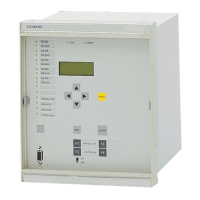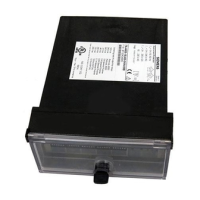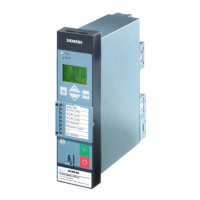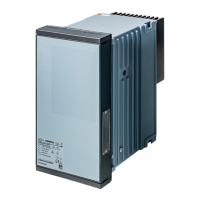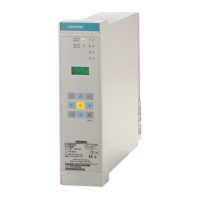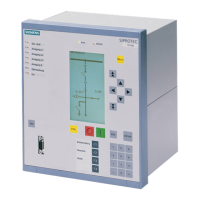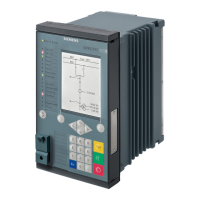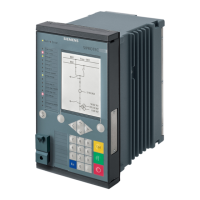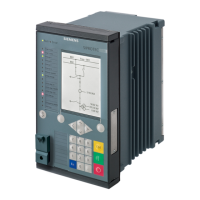Supervisory Functions
145
7SS52 V4 Manual
C53000-G1176-C182-1
5.5.1.9 Isolator Status Supervision
Preferential treat-
ment for busbar
coupling
If two busbars are solidly linked via the isolators of one feeder, all feeders which are
connected to the linked busbars are allocated to a preferred busbar protection meas-
uring system. In any case, the bus zone with the lowest configured number is consid-
ered to be preferred. At the same time, the coupler bay is taken out of the allocation
list with respect to the currents.
Isolator running
status
If an isolator changes position, for instance from the OPEN position, it needs a certain
time (isolator running time) to reach the other position. During this running time, the
isolator is considered to be in the CLOSED position. This intermediate status is mon-
itored. If after a set isolator running time ISOL TIME (6301/CU) no checkback signal
is given, the isolator assumes faulty status and an alarm is created by the central unit
per isolator ("FltR $01 $02" (FNo. 176.1122/CU); e.g. for isolator 2).
Auxiliary voltage
supply failure
Usually, the isolator auxiliary voltage is sub-fused in each bay. If the auxiliary voltage
is missing, then all the isolators in this bay display the bit pattern 0/0 (neither OPEN
nor CLOSED), and the alarm "BayDCfailM" (FNo. 10426/CU) is output. In or-
der to prevent erroneous annunciations, there is always a short delay of 500 ms for
the response and the signalling of auxiliary voltage failure. For the distinction of isola-
tor faults, at least two isolators are to be monitored. By cross-checking with the other
isolator positions, this fault condition can be detected. The bay with the faulted isolator
is either assigned the old positions according to the busbar protection (flip-flop relay
characteristic) or all isolators of this bay are considered to be CLOSED. The type of
treatment can be set with the parameter ISOL DC FAIL (6303/CU).
Wire break In the event of short-circuits in the feeders, the busbar protection remains stable even
with a wire break on the checkback signal lines for the isolator status. In that case the
isolator is considered to be CLOSED.
However, the so-called preferential treatment can lead to unselective tripping if all of
the following conditions apply:
• Wire break in the checkback signal line for the isolator status
• Isolator is in OPEN position
• Fault on one busbar
• Second isolator of the feeder is in CLOSED position
Non-selective tripping can be prevented by additional measures. Such measures
could be, for instance, interlocking of the TRIP command with the integrated overcur-
rent query or monitoring the pick-up of the feeder protection.
Wire breaks are annunciated in the central unit as isolator malfunction status individ-
ually for each feeder ("FltR $01 $02" (FNo. 176.1122/CU); e.g. for isolator 2).
Behaviour in the
case of an isolator
intermediate status
The parameter ISOL ST 1/1 (6304/CU) is ised to specify which isolator status will
be assumed if the status checkback signal is not plausible (at the same time OPEN
and CLOSED).
The meaning of the isolator status indications is shown in the following table.
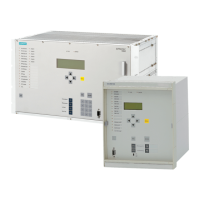
